The “doctrine” of the marapu religion
In order to distinguish themselves from Christianity or Islam, non-converted Sumbanese call their religion the marapu religion. In return, they are often described as belum beragama ‘who doesn’t have a religion yet’ (but this expression is rather common everywhere in Indonesia to refer to people who still stick to indigeneous faiths).
Rindi do believe in a creator God which is never adressed in rites and does not manifest himself in the world. They claim to know almost nothing about him but do no conceive him as an embodied form. According to Forth “after creating the world, God ceased to be active and transferred responsability for human affairs to the clan ancestors and other classes of spirits. God might retain ultimate control over the world, He Himself does not act“.
The basis of Sumbanese religion is that man cannot communicate with God. The clan ancestor (the marapu) serves as an intermediary as well as a tutelary spirit that can protect the livings if they conform themselves to the rules and customs instituted by the first ancestors.
Sumbanese believe that misfortune strikes because their marapu have revoked their protection. This might happen if they have been offended by a transgression or unsufficiently propitiated. The ancestors don’t really punish their descendants but let them be striken by evil forces controled by God.
The spirits
Beneficient spirits
Rindi distinguish two major classes of “good” spirits: the marapu and the beings present at altars and other important boundaries (some particular spots in an ancestral house are always habited by a spirit for instance).
Marapu are almost always male an belong to a patrilineal clan.
Altar spirits always form pairs of one male and one female and concerns groups defined on the basis of locality. They are considered lesser spirits than the marapu.
The two classes serve the same purpose: provide prosperity and protection against harmful forces.
The Marapu
The meaning of marapu is not exactly the same throughout the island. In eastern Sumba, it identifies the first ancestor, the founder of the lineage (what ethnologists call apical ancestor). In the West, the term marapu has a more general meaning because it applies also to a variety of other spiritual manifestations which equivalent have distinct name in eastern domains.
In Rindi, the marapu (which here refers to the first ancestor of a clan) has a name and an history. Some have a special connexion with an animal or a phenomenom. For instance clan Kurungu believes that the grandmother of its founding ancestor turned into a monkey so they pledged to neither kill nor eat monkeys.
Can Dai Ndipi has the power of the lightnings, who are thought to come from a canon their ancestor fires upon the earth to punish those who transgress against his descendants. When someone or something is struck by lightning, the clan can demand a fine from the victim. If someone dies after such an accident, then a member of the clan has to perform a rite of atonement on the victim’s corpse…
The marapu (first ancestor or ancestors) are distinguished from the dead (mameti in Rindi). The dead and the first ancestors have great powers over the livings but only the marapu are mediators between men and God. Generally, the first 4 generations are the most sacred.
The Rindi claim that the first ancestors never died but after establishing their lineages on Sumba, simply returned to a place called the Base of the Sky (the horizon) where they are still presents. Marapu are thus immortal spirits present on Earth forever and they represent a source of life. Forth notes a kind of duality in the status of the marapu because some also claim their marapu have died and the locations of their graves are remembered.
Every clan keeps heirlooms in the attic of its ancestral house. Some of it is refered to in Rindi as tanggu marapu ‘marapu possessions’. These are the most precious, it is strictly forbidden to touch or even see them, anyone doing so would fall ill and most likely die.
Those objects are infused with great power. Hoskins reports an interesting story that happened in 1986. A village kept a sacred ceramic urn found long time ago on a beach, and people would come and place gold coins inside to seek blessings. One day the urn was stolen, Muslim fishermen from a nearby village were suspected and in particular a rich merchant who had set off on his boat to Flores to allegedly sell the urn. While he was in the sea, he got caught in a huge storm, lost his boat and the urn drifted back with the waves to the place it was originaly found. The villagers recovered it (empty and cracked), brought it back to the village and performed sacrifices to call back the soul of the urn. The urn was said to have taken his own revenge.
Altar and boundaries spirits
An altar (kotoka) is always located outside the house. It is either a pile of stones or at least one flat stone slab placed under a tree or a wooden stake. Rites performed at the altars are not adressed to the ancestors.
The most important altar is the altar in the village yard who can prevent disease or witch to enter the village. There is also altar for horses and buffaloes to ensure the fertility of the livestock, seashore altars to request sucess in fishing or ‘altar of the chase’ for hunting.
There is also agricultare altars (a flat stone place at the foot of the fence).
Annual renewal rites must be held to ensure that the altars continue to fulfill their functions, usually at the onset of the wet season in late November or early December
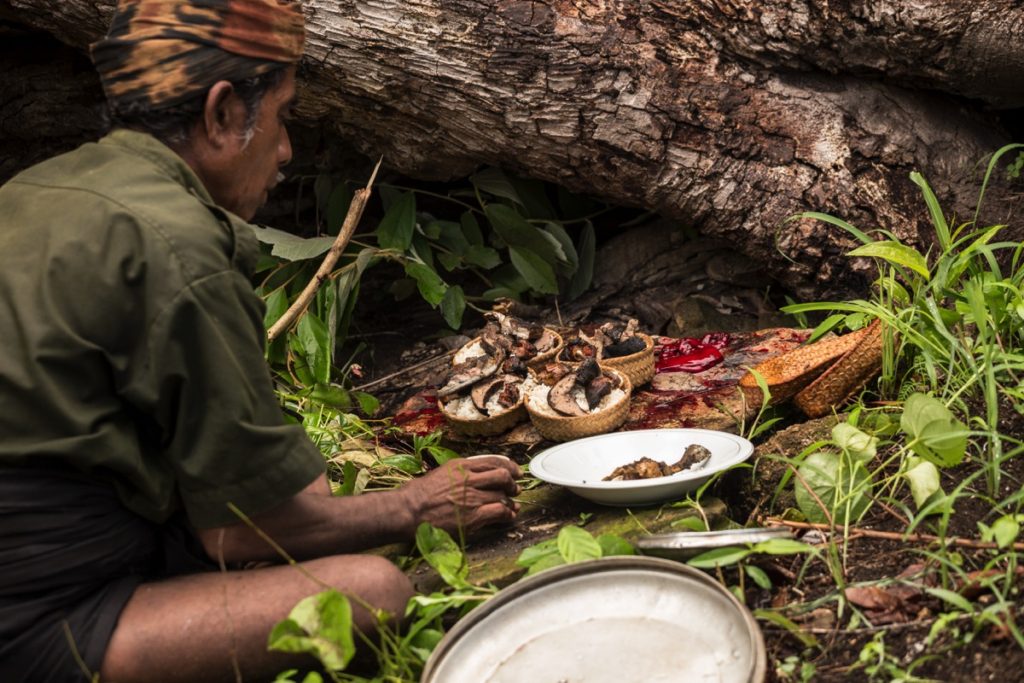
A fertility ritual held at an altar in Rende
Malevolent spirits
Besides marapu, Rindi people believes that the earth is inhabited by several malevolent spirits including:
- Patau tana ‘inhabitants of the earth’ who usually appear at night in the form of common snakes. Contact with them can have serious consequence and rites of atonement must then be performed.
- Kawuu tana ‘steam of the earth’ which are epidemic diseases especially prevalent during the early part of the wet season, a period traditionaly marked with food shortage and hardship. Rites are held to prevent them from entering the villages
- Maràmba tana ‘lord of the earth’ a more ambivalent spirit who is can potentially bring power to certain individuals by inviting them to enter the realm of spirits (patuna) through large trees or giving magic stones (watu kaborangu) that confer invulnerability to accident or the attack of witches.
All sorts of spirits may be invisible to some and visible to others.
The most dangerous kind of spirits are some hybrid creatures assimilated to witches (marangu). They are dual creature, able to assume a human body but inhabited by a power called wàndi. The wàndi can temporarily assume the form of a noxious animal like a snake, a scorpion or a mouse to leave the body by its orifice. They then become invisible, can fly and attack asleep or ill people to steal their soul (harangu). The witch have the ability to misuse people hairs, so Rindi people always collect the cut hairs and place them beneath a shaddy tree.
White teeth are characteristic of spirits, normal people have blackened teeth. Persons most commonly identified as witches include outsiders, vagrants or some people of low rank.
The concept of soul
In Rindi, Man is thought to have a hamangu, which can be partly assimilated to our concept of soul or consciousness. It is the ultimate source of the senses as well as the ability to think and act. At death, the hamangu leaves the body for good and becomes incorporated into the land of the dead.
When someone is ill or emotional distressed, the hamangu (the soul) is said to leave the body and roam outside the village. It could get lost or stolen by a witch, so a rite of atonement to return the soul and to soothe it might be carried out.
Similarly, Rindi believe that the soul travel during dreams ; but if it goes away too far or for too long it may not be able to return to the body and face again the risk of being seized by a witch. If someone dreams a lot or has persistent and disturbing dreams, a similar rite may be held.
The liver is regarded as the center of emotions and thought. That’s one of the reason for the use of sacrificed animal’s liver as an oracle: the condition of the organ is believed to reflect the will of the spirits to whom the animal has been dedicated.
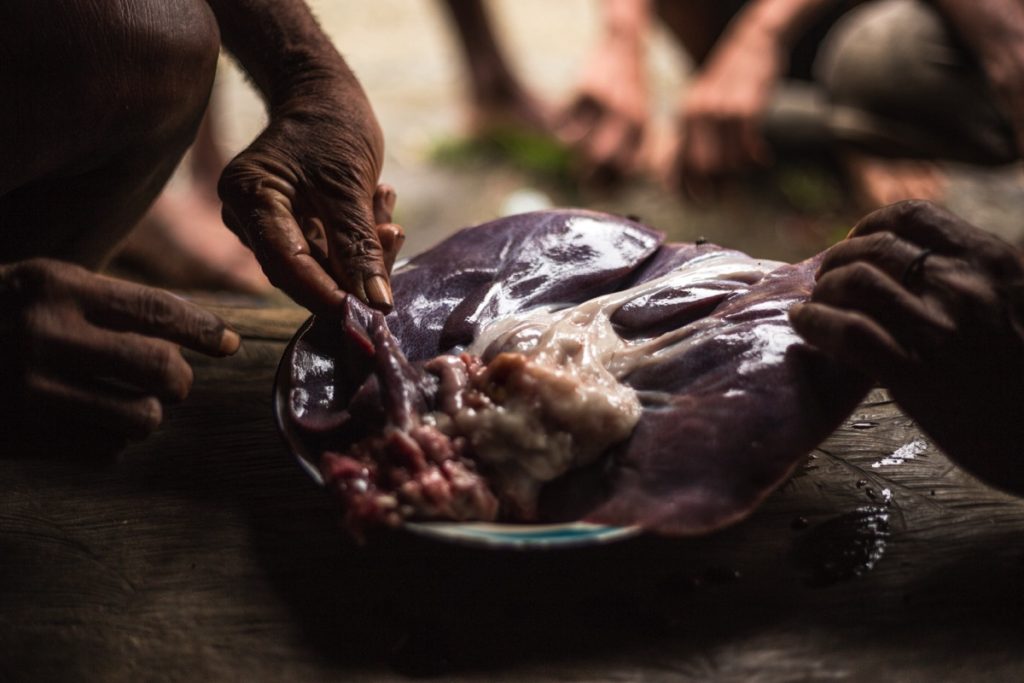
A pig liver being examined in Lauli
Additionaly, Rindi also have the concept of ndewa, described by G.Forth as suggesting “a sort of animating principle, abstract notions as ‘life’ or ‘destinity’ that is present or flows through forms like the body, the hamangu, certain places or objects of ritual significance“.
“Ndewa is usually spoken of as something distinct from marapu which refers to a partiular manifestation or form of spirit, whereas ndewa is a universal force or property”.
The hamangu eventually dies after some time in the land of the dead while the ndewa ascends to the sky or God. Everyone has a hamangu but not every person is said to possess a ndewa, animals and some objects also have ndewa.
The creation of the world
The creation of world involved a male sky and a female earth getting close to each other (the sky was no higher that a man’s height), copulating and then separating again.
Different version of the myth exist. In some, the ancestors were forced to ascend to the Sky to flee away from biblical floods. When the water receded (thanks to the action of a great bird who flapped its wings and brought seeds, trees and stones), they were able to descend to the Earth while God distanced himself from them along with the moon and the sun.
Other accounts tell that most ancestors reached Sumba by boat at Cape Sasar while some other descended from the sky.
As G.Forth puts it, there was “a conjunction and later separation of the two halves of the universe, the masculine sky and the feminine earth, wich resulted in a disjunction between divinity and the mortal world and hence permitted the transfer of life, in the form of the deified first ancestors, to the earth“.
Sumbanese culture refers a lot to symbolical oppositions : outside/inside, female/male and also hot/cold. The earth in general is said to be hot, i.e. “infused with spirit and so potentially dangerous if treated improperly“. This is why houses are built on a raised floor, because the earth is too hot for humans to dwell upon it. “Land given over to habitations and fields, however, is spoken of as cool, since before an area is turned to human use a cooling rite must be performed in order to placate and displace its original spiritual inhabitants“.
Hoskins reports an interesting Kodi myth. An ancestor called Mbora Poka once built a house so tall that it almost reached the sun and the tatch on the roof caught fire. The ancestor asked God to move the sun away from time to time in order to protect his house. God accepted and created nights and days. But others divisions came along and the people no longer rejuvenate after they have grown old. Hence people started to die.
The function of rato/ratu
In Umalulu (Melolo, east Sumba), the authority is divided between the 6 noble clans : 2 hold the title of ratu which applies collectively to the whole clans. They detain the spiritual authority.
Secular authority (marànga) is held by the remaining 4 noble clans. While the ratu have the upper hand on ceremonial concerns, the marànga manages the external affairs like the defence or the war against other domains.
Hence ratu is more an hereditary function who confer the highest religious authority. However, priest duties are assumed by elders in every clans (including the commoners). Hence in the eastern Sumbanese context, the term of ratu is not really a priest.
In Rindi (east Sumba), there is only one noble clan who is considered the maràmba. The office of ratu doesn’t formally exist. But the political and religious authority is still divided among 2 lineages of the noble clan.
On the other hand, in western Sumba an independent priesthood maintained a greater autonomy. No living person is called simply rato (which is a posthumous title given to prestigious individuals), only some high rankings priests can be referred to as rato marapu or rato nale.
Marapu yesterday and today
Hoskins explains : “At the beginning of this century, the code of ceremonial etiquette and rules for interactions with the marapu also served to regulate marriage choices, the division of land, administrative prerogatives and the exchange of livestock and cloth. Whenever a woman changed hands, whenever a promise was made, whenever a community shifted its residence, the ancestral spirits had to be informed and small offerings had to made to them.
The different domains of social life were so bound together that failure to follow the proper procedures in one – the performance of a burial rite, say would have repercussions in another, failure of the crops, illness in the house, or destruction by fire or lightning. There was no separate secular realm where transactions could be carried out without summoning the ancestral spirits”.
In the 1980s, the traditional marapu religion was still practiced by 80% of the population in Sumba. According the the partialy available official statistics (marapu is not recognized as an official religion and hence is normally not supposed to show up in official statistics):
- In 2014 14% of the population in East Sumba district was still adhering to Marapu, but in some subdistricts (kecamatan) the proportion is still very high like in Rindi (50%) or Kanatang (60%).
- In 2010 24% of the population in West Sumba district was following the marapu faith.
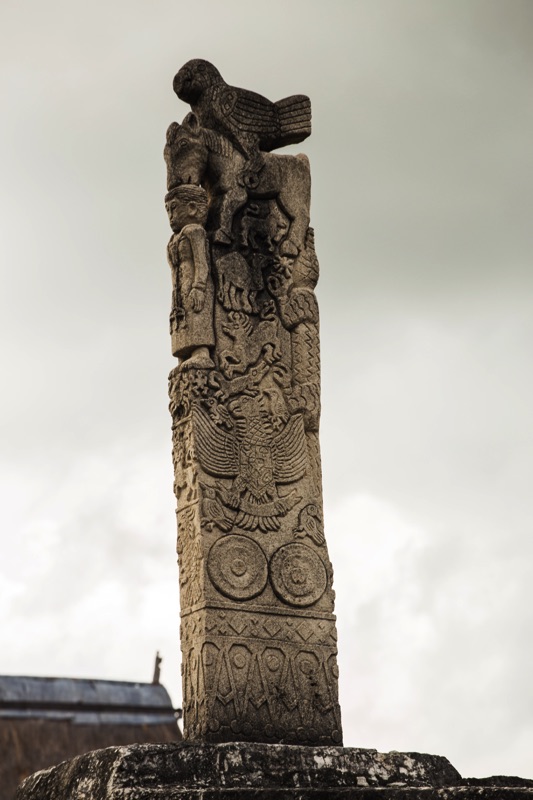
An overwhelming majority of Sumbanese is now Christian (mostly protestants but catholics form a significant minority) but the ritual practices continue, maybe in a somewhat altered form. Buffalos are still slaughtered at funerals, omens read in pig’s liver and megalithic stones erected.
I’ve personnaly heard on different occasions from converted Sumbanese that the tradition (adat) was still more important than the religion. An educated young man from Rende, even assured me that if government officials had to take an oath on marapu, corruption would be eradicated immediately.
In Tambera, one elder explained to me that most children were joining Church because it makes administrative matters much easier. In short, marapu being as other indigeneous faiths not recognized as an official religions, people sticking to it cannot get an identity card (because you need to fill the religious field on the form and you cannot leave it blank), it’s hard for them to go to university, they cannot have their marriage officialy recognized by the states … The strategy was to keep only one male child (usually the elder) unconverted, who would become the “priest” of the next generation.
An interesting testimony found in Hoskins, from a women who joined the Sumbanese Protestant church four months after her husband’s funerals: “the problem with these traditional rituals is that so many people now do not carry them out. My husband would not convert because he owed it to his ancestors and his family to lead them in these rites. He fulfilled his promises to the marapu, but died because others before him did not. After the funeral, I wanted to get off the ladder of these ancestral obligations. Evangelists came to my house and said that the Christian God was merciful. He asks only for a small ceremony of prayers, no such large feasts. He is not as demanding as the marapu, or as strict“.
The position of the Church is rather pragmatic. For instance when it comes to funerals, sacrifice of buffaloes are made in the exact same way for Christian converts and pagans. The Church does accept the exchanges of meat and gifts among the community whereas they forbid the investigation of the causes of the death through divination as well as the transformation of the personal soul into an ancestor.
The few ministers I met in Sumba were all themselves Sumbanese and sympathetic to their ancestors’ tradition. The great museum of Tambolaka is managed and supported by the Church. I’ve seen a minister attending a stone pulling ceremony in Kodi with enthusiasm.
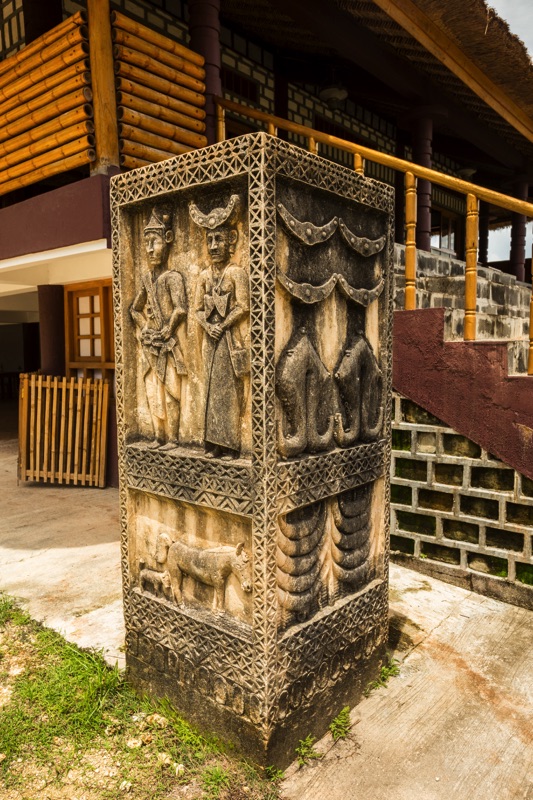
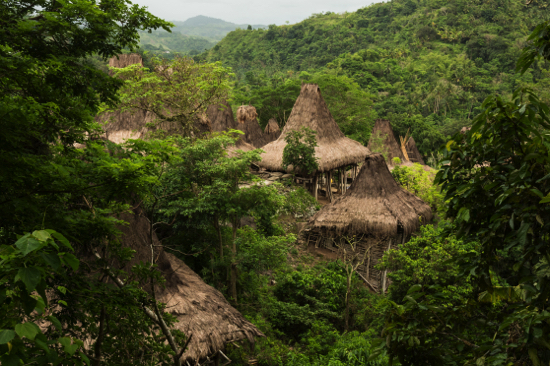
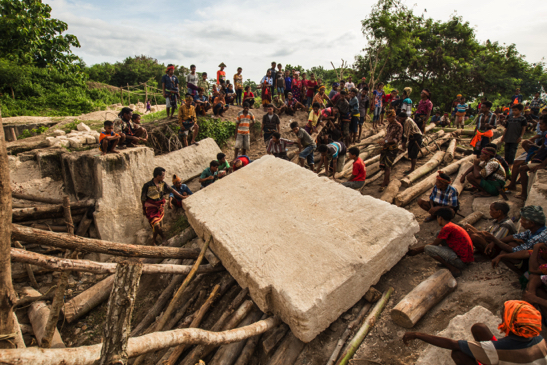
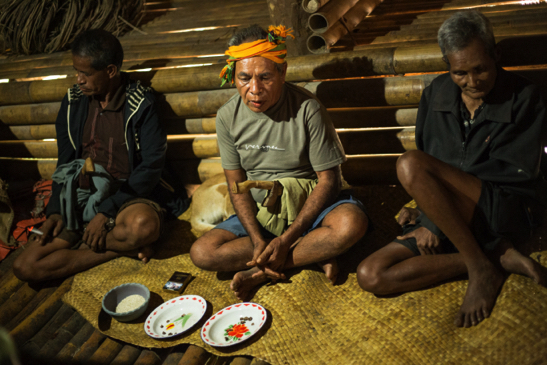
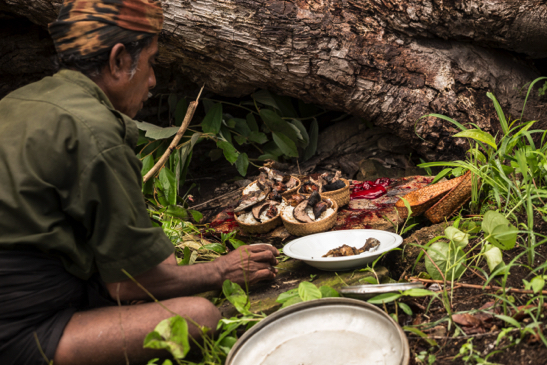
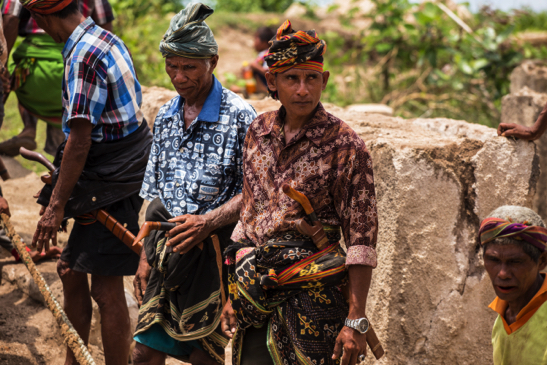
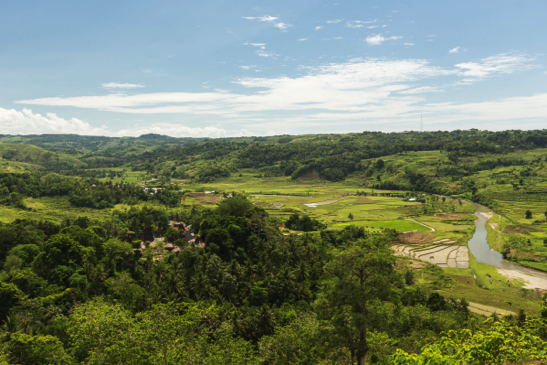
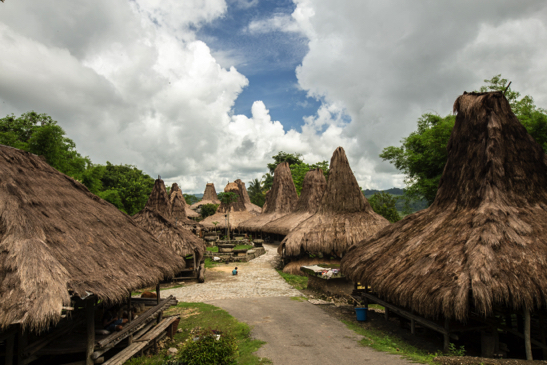
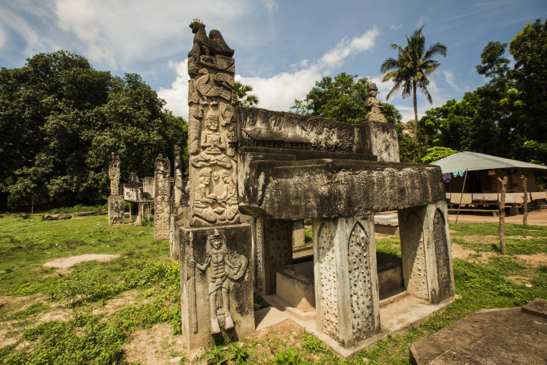
This is a well presented summary of Sumbanese culture, illustrated with your own photos, and citing earlier studies. I appreciate the references to my work The Play of Time.
Well, that was unexpected ! But thank you so much for the compliments Janet. Best. Elliot.